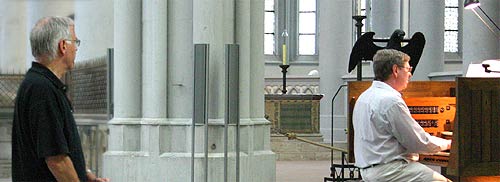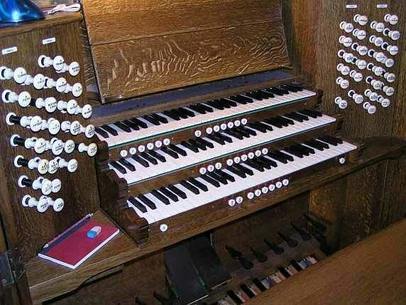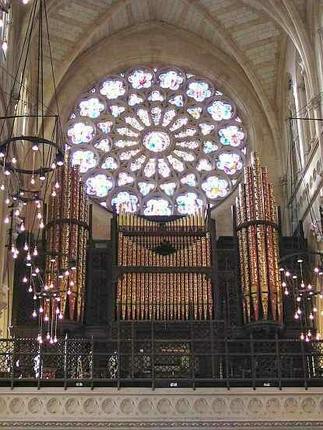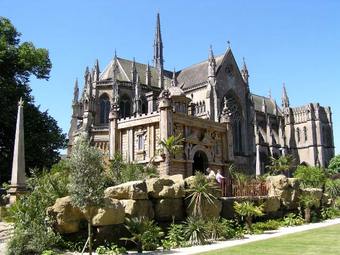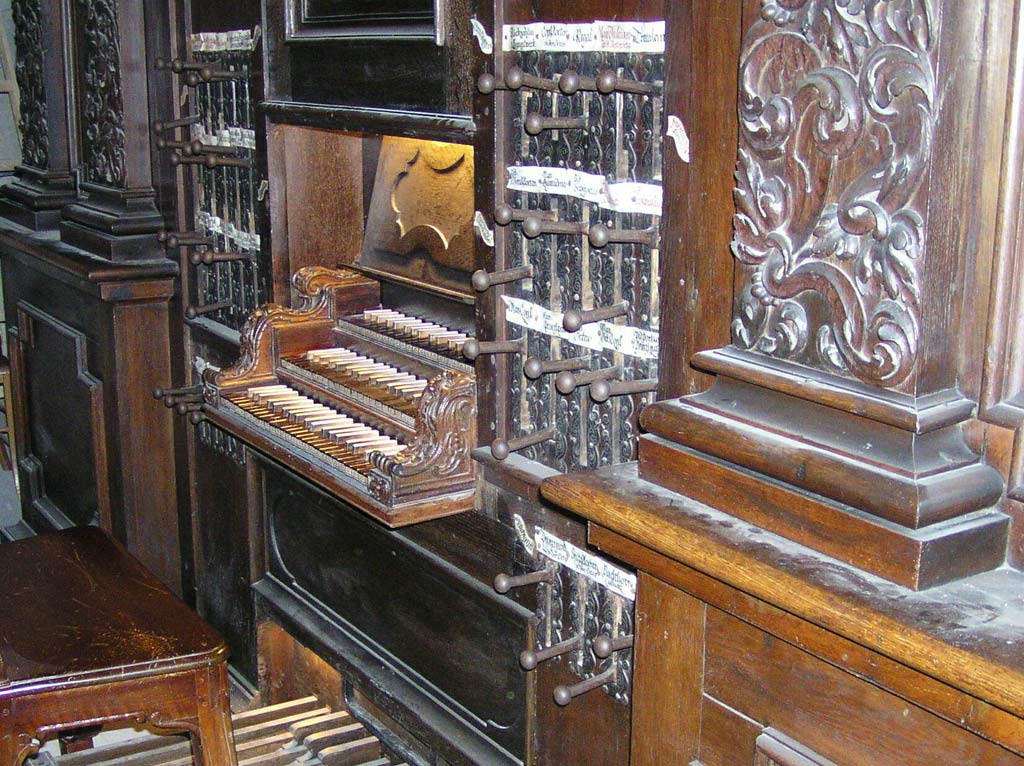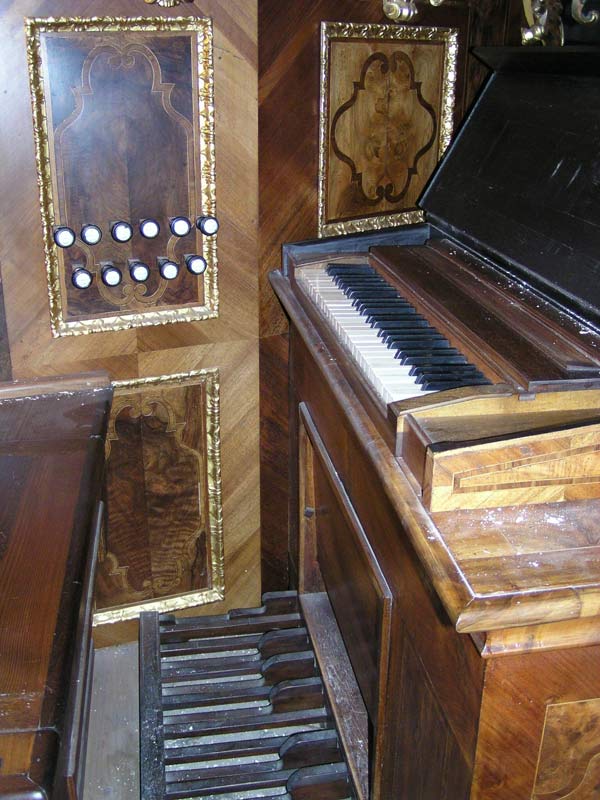Sneezes from the Organ Loft
Tiptoe up to the console and learn what so fascinates organ buffs
There are two methods by which the curious approach organ consoles. The direct is to make a purposeful bee-line, interrupting the performer with a cough, question or even a tap on the shoulder.
A subtle variation is to stand directly behind the organ bench, staring fixedly into the mirror until the unnerved played stops practising, resigned to the inevitable interruption. The indirect method is to move about the building, engrossed in contemplation of stained-glass window, or, in the case of a town hall perhaps, the portrait of a former mayor. This perambulation ceases, with a start of apparent surprise, near the console. From there, fate takes over. The fortunate can forget windows and paintings as they are invited to try out the instrument: those less lucky at least get a general idea of the organ.
|
In the English-speaking world, most consoles bear close resemblance to that in picture 1 — though with infinite variety in detail and size. This one is at Arundel Roman Catholic Cathedral (UK) The organ on its gallery is shown in picture 2. Those who see the strong French influence in the architecture will not be surprised when they see the exterior — picture 3.
The building, though not, perhaps the organ case, might easily have been transported from Northern France. This association with France was strengthened by the work in the Arundel diocese of the late Maurice Couve de Murville, first as priest and later as bishop. His cousin and namesake was Foreign Minister in the governments of President de Gaulle. Those who wander into parts of Europe — and, it is said, of South America — remote from industrialisation, find different traditions of organ-building and some very interesting survivals from earlier centuries. Picture 4 is of an organ at Klosterneuberg Abbey, Austria. Those iron sliders that operate the stops were probably old-fashioned when it was built by Johann Georg Freundt in 1642. Changes of registration, except when the organ is silent, must be rare. At least these levers appear to be straightforward in operation, though care would have to be taken to ensure that each is fully home at the end of each upward or downward stroke: half-drawn stops, as organists - and congregations have found for themselves, sound frightful. A variation that has been reported elsewhere is for the levers to be returned to the off position by necessarily-powerful springs: when moved to the on position they are locked by being moved sideways into notches. Apart from requiring much strength, these can give the registrant painfully-bruised knuckles if they're not grasped firmly. |
|
Other points of interest in this organ are the short-compass of the claviers, and the quantities of dust! Critics of the organ (and such reprehensible persons exist) have suggested that it is most effective as a device to gather dust and deposit this in organ lofts.
Picture 5 is of another Austrian instrument – the 1746 chancel organ at Heiligenkreuz Abbey, Winmola. As at Klosterneuberg, the pedals appear to descend only to EEE (are manual keys here later replacements?). Stop knobs protruding through the marquetry panelling beside the console form an unusual feature. Perhaps this offered a simpler and lighter stop action than one placing registers above the manual. Panelling of wall and of console seem to be all of a piece, perhaps of the same date. Such variations, major and minor, sustain the interest of the organ lover. This is, of course, often incomprehensible to others. So are most enthusiasms. Some time ago, I was talking to a vet. A spider appeared on his desk, possibly to book a professional consultation. It seemed to me to be an ordinary spider, one to be removed to the outdoors, quickly and unharmed, before it could start spinning webs, but worthy of no special remark. Not so to the vet, who seemed to enter an ecstatic trance. “Look at those markings on its back - and its colour – and the size of the mandibles!” It may not have been mandibles – something entomological, anyway. But perhaps entomology has nothing to do with arachnids. Enthusiasms are certainly unaccountable.
David Bridgeman-Sutton, May, 2009
|
Picture Credits: Thanks to Philip Wells for all article pictures. The headline picture showing a fascinated onlooker watching Martin Setchell at Altenberg Dom is by Jenny Setchell.

